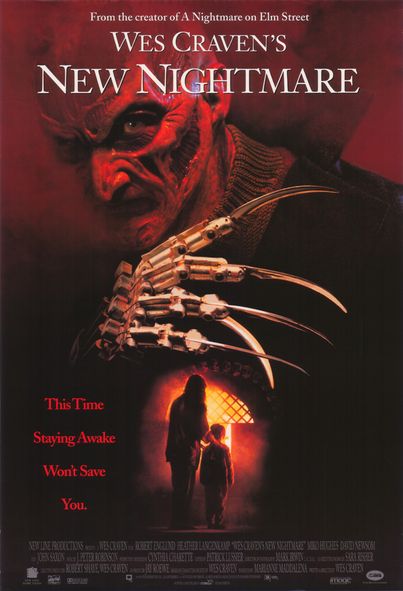New Nightmare (1994)

“New Nightmare” (1994): Wes Craven’s Groundbreaking Meta-Horror Masterpiece
In the annals of modern horror cinema, few directors have left as indelible a mark as Wes Craven. With his visionary approach to the genre, Craven has consistently challenged and subverted audience expectations, and his 1994 film, “New Nightmare,” stands as a prime example of his innovative storytelling prowess.

“New Nightmare” is a bold and imaginative departure from the traditional Freddy Krueger formula, as Craven delves into the realm of meta-fiction to craft a highly self-aware and conceptually daring horror experience. The film follows Heather Langenkamp, the actress who portrayed Nancy Thompson in the original “A Nightmare on Elm Street,” as she is drawn back into the world of Freddy Krueger, the iconic slasher villain, when a malevolent supernatural force begins to blur the lines between reality and fiction.

Craven’s genius lies in his ability to deconstruct the very genre he helped define, using the “Nightmare on Elm Street” franchise as a springboard to explore the nature of fear, the power of storytelling, and the blurring of boundaries between the real and the imagined. By placing Langenkamp at the center of the narrative, the film becomes a meditation on the impact of horror media on the lives of those who create it, as well as the lingering psychological toll it can take on the actors who embody these iconic characters.

The film’s meta-narrative approach is further enhanced by Craven’s deft handling of the Freddy Krueger character. Rather than simply rehashing the familiar tropes of the previous “Nightmare” films, “New Nightmare” reimagines Krueger as a dark, primordial force, a manifestation of humanity’s collective fears and anxieties. This interpretation imbues the character with a newfound sense of menace and unpredictability, as he transcends the confines of the fictional world to torment those responsible for his creation.

Langenkamp’s performance as the fictionalized version of herself is nothing short of captivating. As she navigates the blurring lines between reality and her on-screen persona, Langenkamp delivers a nuanced and emotionally resonant portrayal, effortlessly conveying the character’s growing sense of unease and the weight of her connection to the Freddy Krueger mythos.

Craven’s direction is a masterclass in building tension and atmosphere, employing a wide range of cinematic techniques to create a palpable sense of dread and unease. The film’s dreamlike visual aesthetics, punctuated by striking imagery and unsettling sound design, contribute to an immersive and unsettling viewing experience that lingers long after the credits have rolled.
Beyond its technical excellence, “New Nightmare” also explores profound themes of the human experience, delving into the nature of fear, the power of storytelling, and the ways in which art can shape and reflect our collective psyche. Craven’s narrative subverts the traditional slasher formula, using the “Nightmare on Elm Street” franchise as a lens to examine the broader societal and psychological implications of horror media.
The lasting impact of “New Nightmare” is a testament to Craven’s visionary approach to the genre. By blending meta-fictional elements with his signature brand of visceral horror, the director has crafted a film that defies simple categorization, serving as a thought-provoking exploration of the relationship between art, identity, and the nature of reality.
In the pantheon of modern horror cinema, “New Nightmare” stands tall as a groundbreaking and deeply influential work, a testament to Wes Craven’s unparalleled talent for subverting audience expectations and pushing the boundaries of the genre. This film’s enduring legacy continues to inspire and captivate audiences, cementing Craven’s status as one of the most visionary and innovative directors in the history of horror filmmaking.











